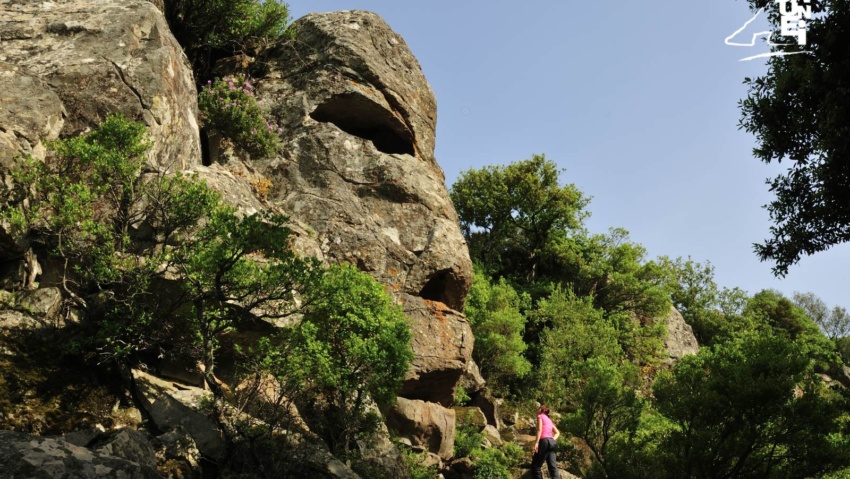
The “Stone Mask” of Golgo, also called the “Lithic Face”, is a basalt wall that reveals a surprising anthropomorphism when viewed from a certain point on the path below.
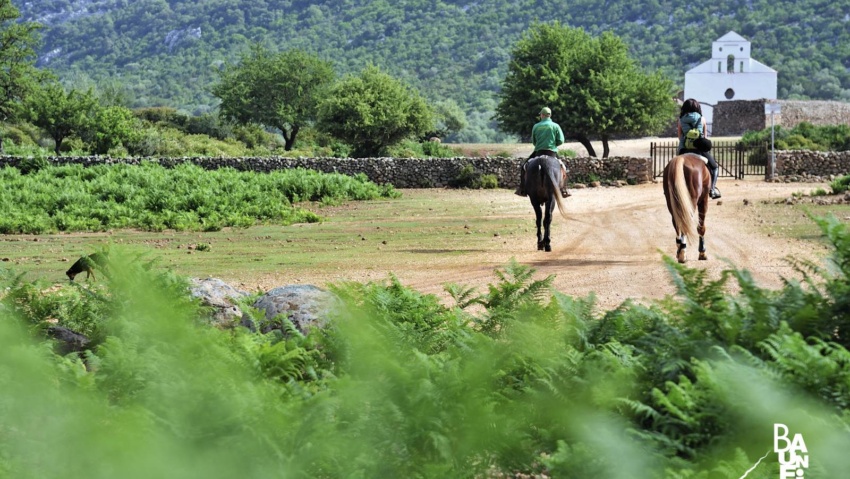
The Golgo wells, also called “Nuragic Wells”, are in the middle of a clearing a few hundred meters from the church of St. Peter.
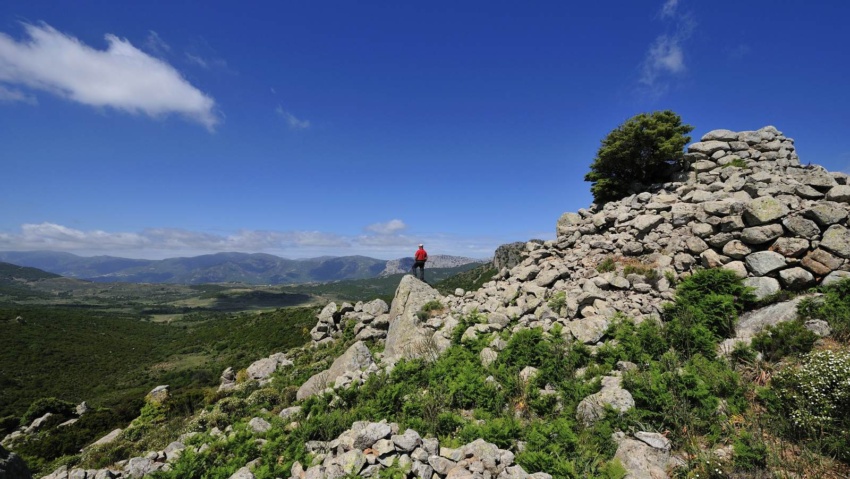
At about 500 metres as the crow flies from the church of St. Peter is the nuragic complex of “Orgodùri”.
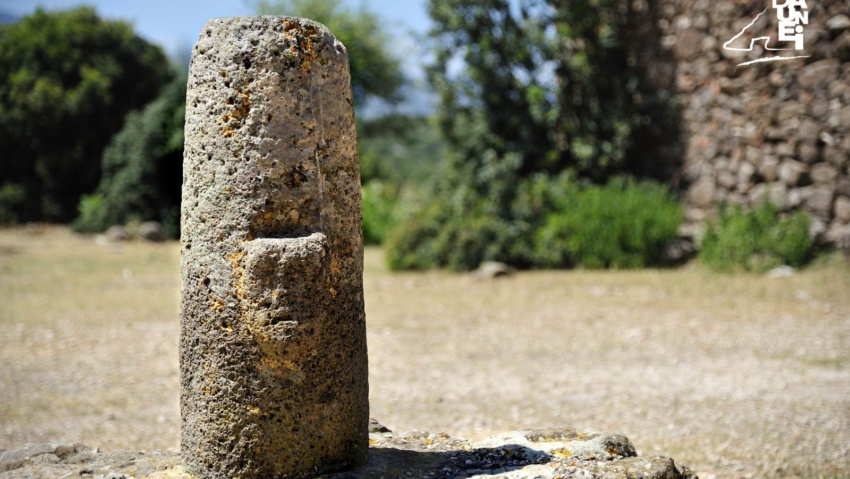
The “Golgo Bethel” is located in the square in front of the church of St. Peter and is one of the most famous monuments in the territory of Baunei from the Nuragic era.
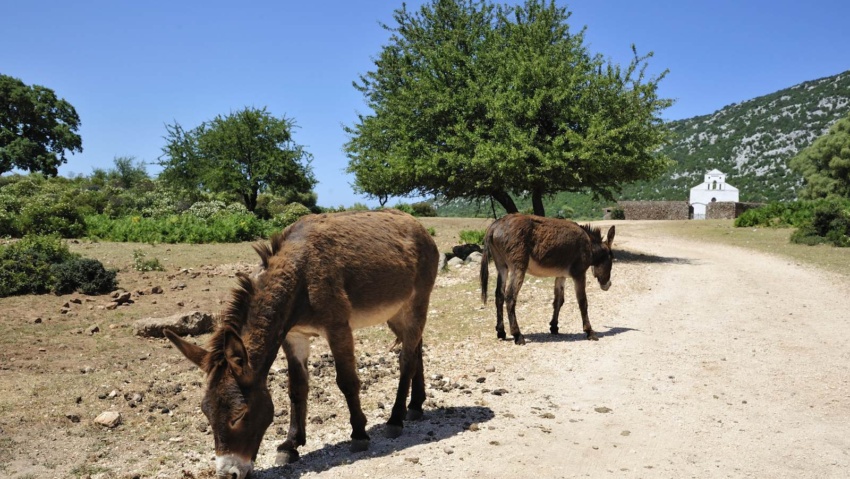
The oven, made of basalt stone, is located outside the structure surrounding the church, leaning against the building that serves as a larder on feast days.
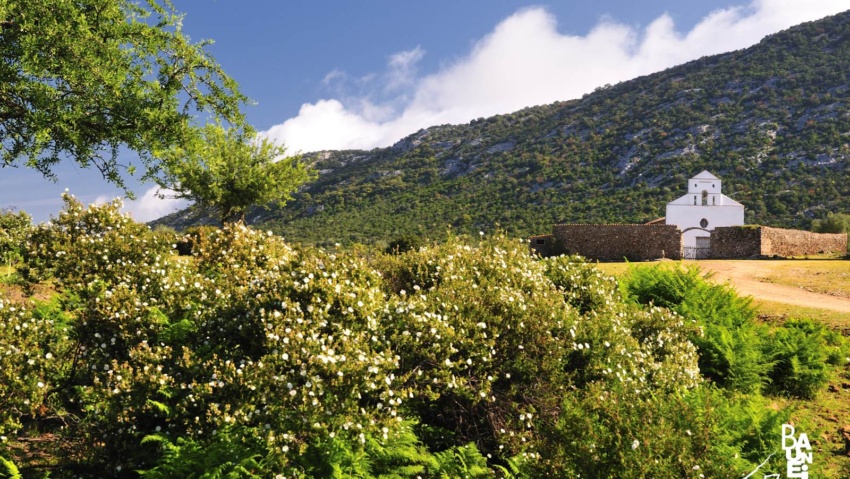
The country church dedicated to St. Peter, with that unmistakable, white angular facade that stands out against the backdrop of the mountains separating Golgo from the sea.
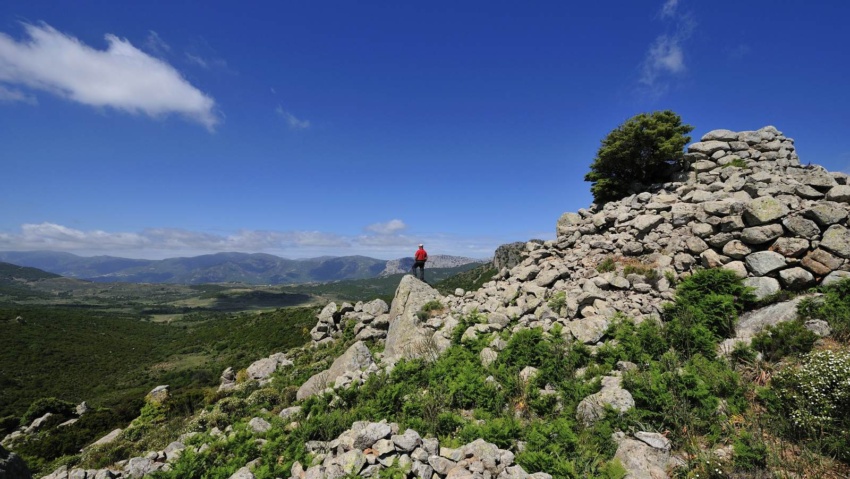
One of the most evocative and easily accessible nuraghes on the Golgo plain is the “Coa ‘e Serra” that stands in a dominant position in the valley, 511 metres above sea level, in the southern part of the plateau.
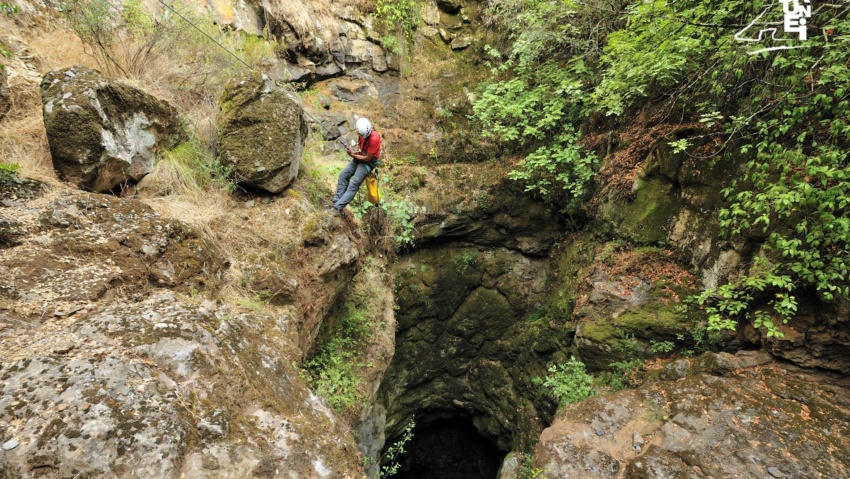
Su Sterru: in the collective imagination of the inhabitants of Baunei, the Golgo chasm, ‘Su Sterru’, has always represented the unknown.
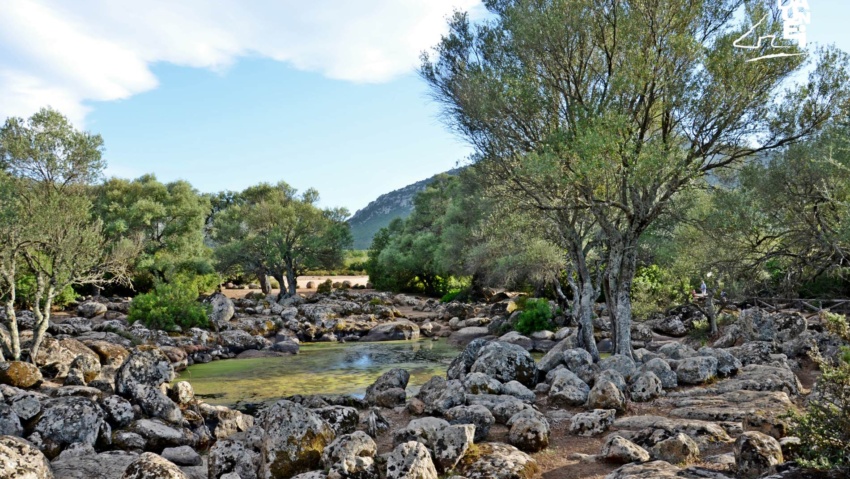
The basaltic pools of Golgo, not far from the church and the chasm, in which rain water stagnates all year, are called “As Piscinas” (“the pools”) by the inhabitants of Baunei.
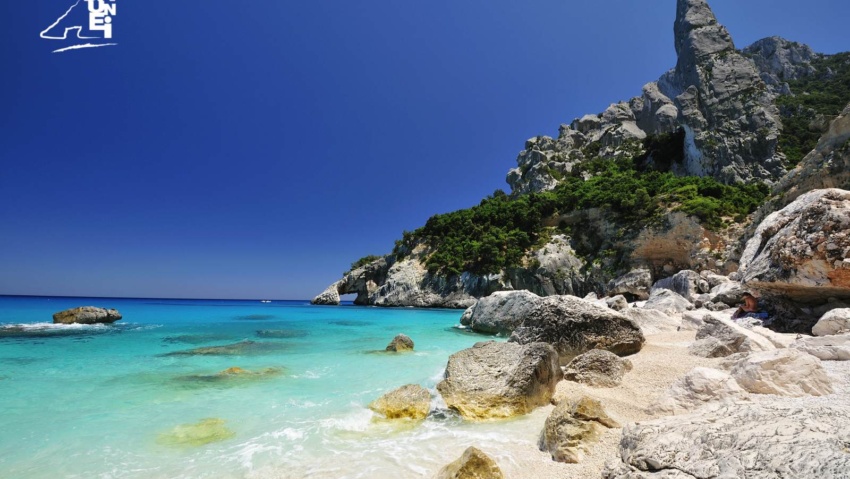
Continuing along the dirt road alongside ‘As Piscinas’, you reach the locality called ‘Su Porteddu’, where begins the path that leads to Cala Goloritzè.
